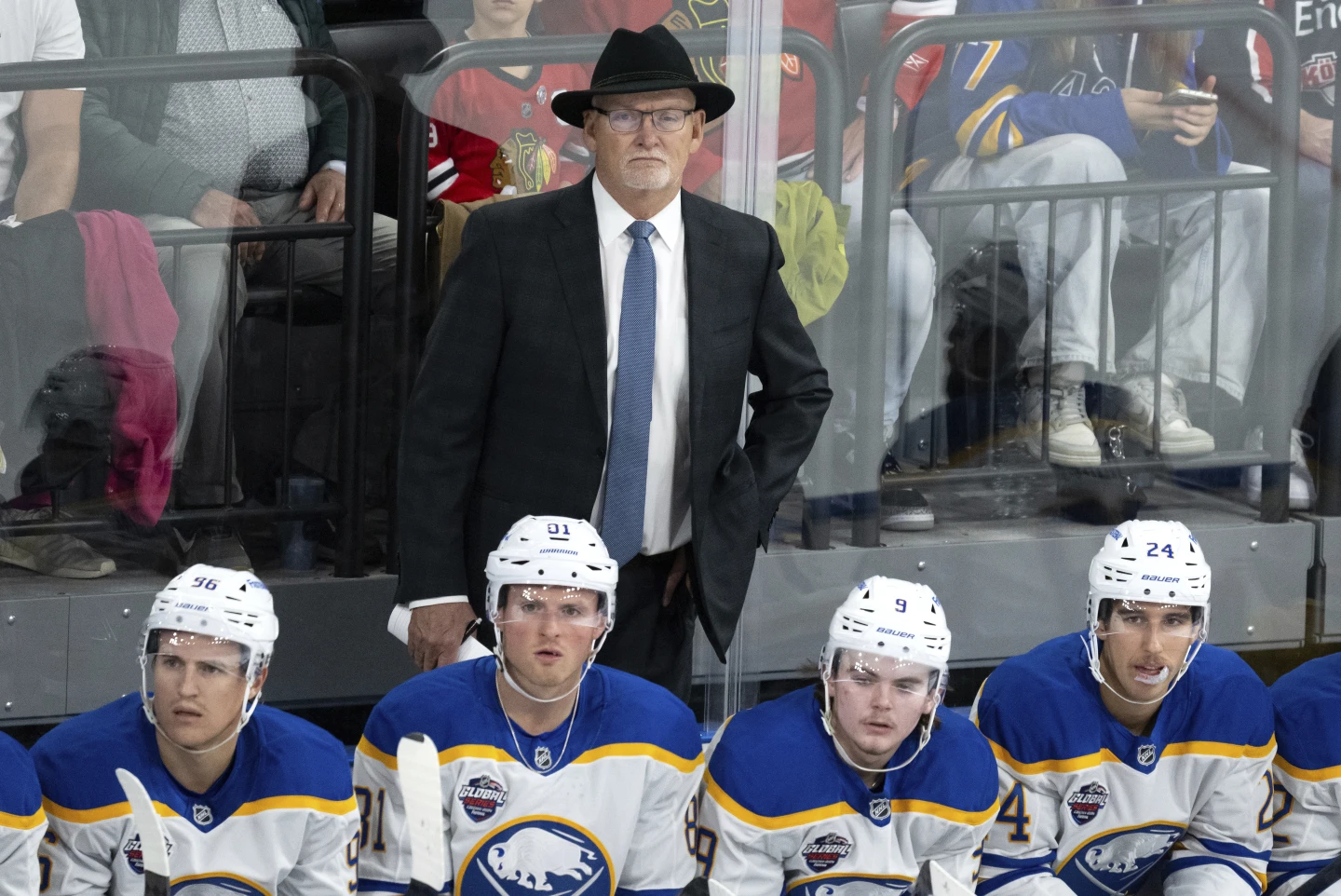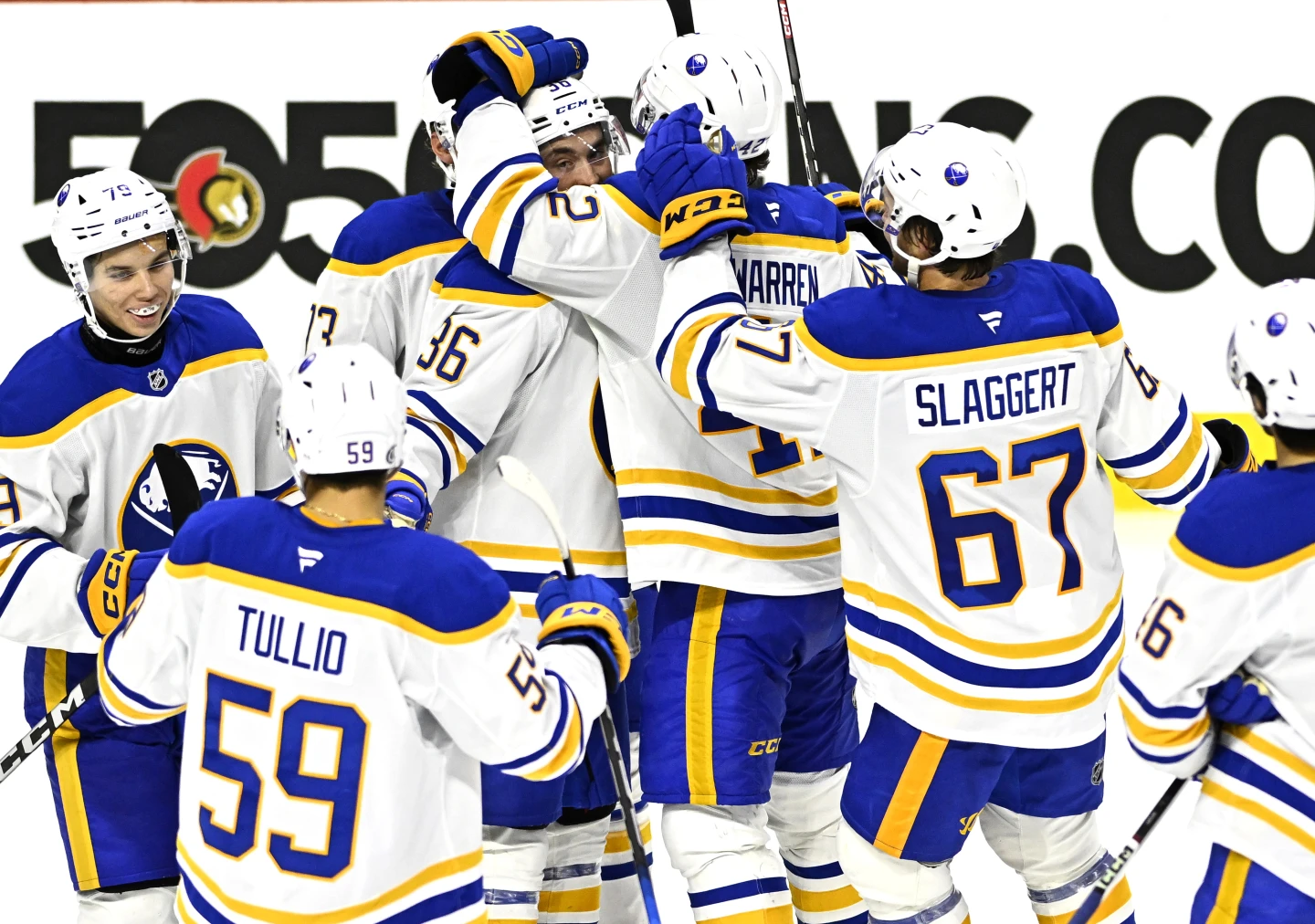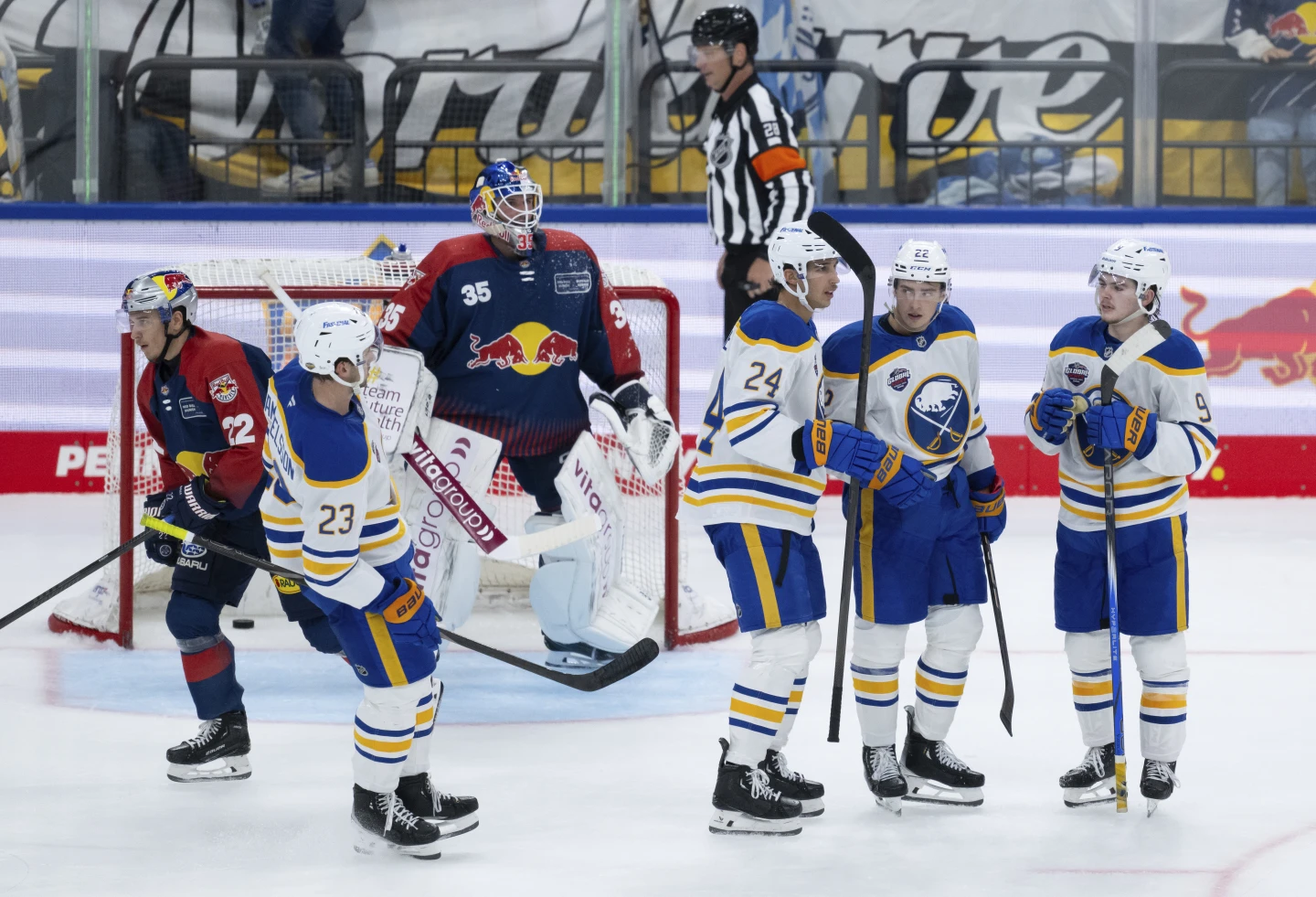The Buffalo Sabres have a new coach, Lindy Ruff, and a new captain, Rasmus Dahlin. They also have a modern arena with a shiny new scoreboard and a newly installed roof to fix many leaks.
However, this comes with a history of unfulfilled hopes during the team’s NHL-record 13-year playoff drought. What makes this year different from the past?
“I guess the best way to answer that is, I understand,” said general manager Kevyn Adams in an interview with The Associated Press before heading to Europe, where Buffalo will kick off its season in Prague against New Jersey with two games.
“Until you get the results, until you become a contending team and win in the playoffs, people will question the decisions you make.”
Adams explained that he has spent the last three years reshaping the team, which included trading captain Jack Eichel to Vegas in November 2021 and focusing on building through younger players.

“Our plan has been to get to this point where we have a young core that wants to be here for the right reasons and play together,” Adams said. “I believe in the people in our locker room. I believe in the coaching staff. And now we have to turn them into results, for sure.”
It was Adams who said the team was ready to compete last year, but the Sabres struggled through a season that ended with the firing of coach Don Granato, making it the seventh coaching change for the team since Ruff was let go in 2013.
The franchise had the eighth-highest average attendance in the NHL in 2006-07, with 18,690 fans per game, the last time Buffalo won a playoff round. Last year, the Sabres ranked 28th with an average of 15,981 fans.
These are the challenges for a team that has finished last overall four times and has not placed better than 19th in the NHL standings since the 2010-11 season.
Much of this playoff drought has happened since Terry and Kim Pegula bought the Sabres in February 2011 and the NFL’s Bills in 2014. Despite different strategies—like spending on free agents, rebuilding, and focusing on youth—under four general managers, the Pegulas have seen little success, with the team losing millions before the pandemic.
The task of marketing the Sabres is now in the hands of Pete Guelli, who was appointed as CEO of both teams in March. Along with various changes in the front office, Kim Pegula could not continue her role as president of both teams after suffering a cardiac arrest in June 2022.
“Look, we definitely have to improve the financials,” said Guelli, who was previously the Bills’ vice president of business ventures before leaving in 2009 to work for the NBA in Charlotte, where he helped turn the Bobcats into the Hornets. For the past five years, he managed the business operations of the New York Giants.
Guelli sees similarities between the Hornets and the Sabres in their challenges and potential, particularly by focusing on enhancing the fan experience.

“Obviously, you can never control what happens on the court, on the field, on the ice,” he said. “What you try to do is set up a sustainable business model that can help you maximize success in some ways regardless of performance.”
The new scoreboard and roof are positive changes. Guelli is adding other features to attract fans to the arena, believing that the on-ice performance will improve.
“Just because people might be skeptical, you can’t deviate from that strategy,” Guelli, who is from nearby Rochester, added.
The Sabres are a passion project for Pegula, who has been a fan of the team since the early 1970s while growing up in Pennsylvania. This is evident in Pegula’s commitment to investing his own money in arena upgrades and being responsible for nearly $1 billion to fund the construction of the Bills’ new stadium, which is set to open in 2026.
The Bills are the four-time defending champions of the AFC East. The closest the Sabres have come to success in recent years was in the 2022-23 season when they finished just one win short of breaking their playoff drought.
